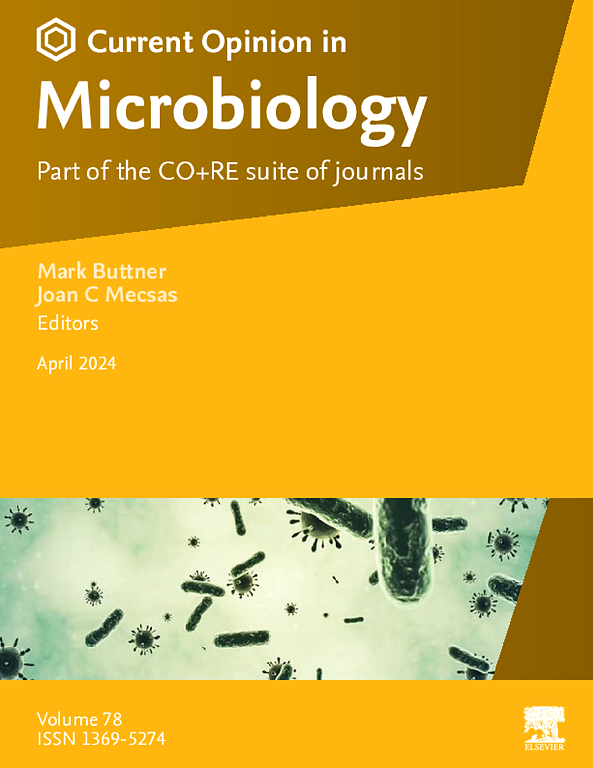瞬时微生物建筑师:在植物微生物组组装过程中追踪短暂分类群的遗留效应
IF 7.5
2区 生物学
Q1 MICROBIOLOGY
引用次数: 0
摘要
植物微生物群组装是一个动态过程,由一系列微生物扩散事件、相互作用和环境波动形成。虽然大多数研究都强调常驻和核心分类群在驱动微生物组结构和植物健康方面的作用,但对瞬时微生物成员(暂时存在于植物组织中然后从微生物群中消失的分类群)的生态意义仍未得到充分探讨。在这篇观点文章中,我们提出这些短暂的微生物可能充当“短暂的微生物建筑师”,能够产生影响微生物群组装轨迹和长期植物适应性的遗留效应。通过回顾已有的时间研究,我们发现与核心分类群相比,瞬态分类群通常是最多样化和最丰富的植物微生物群成员。我们强调了优先效应、生态位修饰和微生物-微生物之间的相互作用是如何由瞬时分类群介导的,可以改变群落组成,调节共生体的招募,并塑造植物对生物和非生物胁迫源的反应。我们确定了突出的问题,并提出了解决这些问题的方法进步,包括高分辨率纵向采样和综合组学方法,这将使这些难以捉摸的分类群的检测和功能表征成为可能。最后,我们讨论了在可持续农业微生物组工程策略中利用瞬时微生物构建器的潜力,强调了在关键植物发育窗口期进行有针对性干预的必要性。通过认识和利用这些短暂成员的遗留效应,我们获得了以前被忽视的影响植物-微生物相互作用的生态杠杆。本文章由计算机程序翻译,如有差异,请以英文原文为准。
Transient microbial architects: tracing the legacy effects of ephemeral taxa during plant microbiome assembly
Plant microbiota assembly is a dynamic process shaped by a succession of microbial dispersal events, interactions, and environmental fluctuations. While most research emphasizes the roles of resident and core taxa in driving microbiome structure and plant health, the ecological significance of transient microbial members (taxa temporarily present in plant tissue and then disappearing from microbiota) remains underexplored. In this opinion article, we propose that these ephemeral microorganisms may act as ‘transient microbial architects’, capable of generating legacy effects that influence the trajectory of microbiota assembly and long-term plant fitness. By reviewing the available temporal studies, we show that transient taxa often collectively represent the most diverse and abundant plant microbiota members compared to core taxa. We highlight how priority effects, niche modification, and microbe–microbe interactions mediated by transient taxa, can alter community composition, modulate the recruitment of symbionts, and shape plant responses to biotic and abiotic stressors. We identify outstanding questions and propose methodological advances to address them, including high-resolution longitudinal sampling and integrative omics approaches, that will enable the detection and functional characterization of these elusive taxa. Finally, we discuss the potential for harnessing transient microbial architects in microbiome engineering strategies for sustainable agriculture, emphasizing the need for targeted interventions during critical plant developmental windows. By recognizing and harnessing the legacy effects of these transient members, we gain access to previously overlooked ecological levers for shaping plant–microbe interactions.
求助全文
通过发布文献求助,成功后即可免费获取论文全文。
去求助
来源期刊

Current opinion in microbiology
生物-微生物学
CiteScore
10.00
自引率
0.00%
发文量
114
审稿时长
6-12 weeks
期刊介绍:
Current Opinion in Microbiology is a systematic review journal that aims to provide specialists with a unique and educational platform to keep up-to-date with the expanding volume of information published in the field of microbiology. It consists of 6 issues per year covering the following 11 sections, each of which is reviewed once a year:
Host-microbe interactions: bacteria
Cell regulation
Environmental microbiology
Host-microbe interactions: fungi/parasites/viruses
Antimicrobials
Microbial systems biology
Growth and development: eukaryotes/prokaryotes
 求助内容:
求助内容: 应助结果提醒方式:
应助结果提醒方式:


